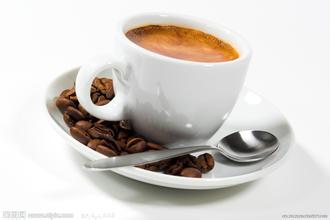A comparison between Chinese Coffee Culture and Foreign Coffee Culture
Coffee Culture in China
The word "coffee" comes from the Greek word "Kaweh", which means "strength and passion". Coffee tree is an evergreen shrub belonging to the Capsicum family. Coffee for daily drinking is made from coffee beans with various cooking appliances. Coffee beans refer to the nuts in the fruit of coffee tree, which are roasted by appropriate roasting methods.

In China, people are drinking coffee more and more. The resulting "coffee culture" fills every moment of life. Whether at home, in the office, or in social settings, people are sipping coffee: it is increasingly associated with fashion and modern life. Coffee houses everywhere became a good place for people to talk, listen to music and rest, and coffee gradually developed into a culture. Whether it is freshly ground coffee beans or freshly brewed hot coffee, it emits a rich aroma that is intoxicating. There are many ways to savor this indulgence: espresso, cappuccino, latte, flavored coffee; they offer a variety of options for coffee house frequenters in Beijing, Shanghai and other big cities in China. The Chinese are also starting to like making their own coffee. Roasted coffee beans and percolator, filter paper to make a cup of fresh coffee, do not have a taste.

Coffee is being accepted by more and more Chinese people as it becomes known as a drink with a long history. Statistics show that China's coffee consumption is rising year by year, and is expected to become an important coffee consumer in the world. Now, Yunnan coffee produced in China's own land, with its noble quality and low price, will promote this trend, guide this fashion, become Chinese people's own coffee brand, thus having China's own unique coffee culture, this chapter will be written by us! Please have a cup of coffee, it is the taste of life.
When did coffee enter China, a country with thousands of years of tea culture?
When the finished coffee entered China, we have no way to verify, and according to historical records, in the tenth year of Guangxu of Qing Dynasty (AD 1884), a British tea merchant found that Taiwan's climate is very similar to that of Central and South America, which should be a good geography suitable for growing coffee. Therefore, this businessman introduced 100 Arabic coffee trees to Taiwan for planting, thus becoming the "originator" of Chinese coffee and opening the prelude to the development of coffee in China. Coffee drinking in Taiwan is like a national sport, not only in cafes, but also in fast food restaurants.
The earliest coffee planting in the mainland began in Yunnan Province at the beginning of the 20th century. A French missionary brought the first batch of coffee seedlings to Zhukula (the source of Hougu) in Binchuan County of Yunnan Province. Now, coffee trees introduced more than 100 years ago are planted in Guangdong, Guangxi, Yunnan, Taiwan and Xiamen, Fujian Province, namely "Chinese coffee"(Chinese coffee). The coffee culture of the mainland of China should start from the British French Japanese Concession in old Shanghai. As the oriental metropolis of "Pearl of the Orient", the coffee culture of old Shanghai should be said to be the earliest in China, and the coffee shops at that time were the places where foreigners and upper-class Chinese appeared.
Now in China, people are more and more fond of drinking coffee, and the accompanying "coffee culture" fills every moment of life. Whether at home, in the office, or in social settings, people are sipping coffee: it is increasingly associated with fashion and modern life. Coffee houses everywhere became a good place for people to talk, listen to music and rest, and coffee gradually developed into a culture. Whether it is freshly ground coffee beans or freshly brewed hot coffee, it emits a rich aroma that is intoxicating. At the same time, thousands of cafes seemed to fill cities overnight. China, an ancient civilization, will eventually create its own coffee culture.
Coffee Culture Abroad
No taboos, American style.
Americans drink coffee like a game that doesn't need rules, with no taboos. Americans are contemptuous of European coffee brewing. Americans drink coffee freely and coffee also penetrates their lives. Americans can't live without coffee almost 24 hours a day. Thus consuming one-third of the world's coffee production, the United States is the world's largest coffee consumer.
Generally speaking, Americans live a busy and tense life, unlike people in Europe and the Middle East who can enjoy life in a relaxed mood. This is manifested in drinking coffee. Americans often brew a large pot of coffee from morning to night. Because they add too much water, the taste is particularly weak, so many people criticize American coffee as really bad to drink.
Turkey has a lot of aftertaste.
You can't say coffee without mentioning Turkish coffee. Coffee began to be commercialized in Turkey in the 16th century and spread rapidly to continental Europe. Popular in Greece, Eastern Europe, the Middle East, North Africa and other places coffee drinking method, commonly known as Turkish coffee or Arabic coffee, it still maintains the mystery of early religious rituals. The traditional Turkish coffee method is to grind the roasted hot coffee beans into fine powder, add sugar and cold water into the coffee maker, simmer slowly over low heat, stir and add water repeatedly, about 20 minutes later, a cup of fragrant and strong coffee is finished. Because locals drink coffee unfiltered, this cup of thick soup-like coffee poured into the cup has thick foam on the surface and residue at the bottom of the cup. In Turkey, being invited to someone else's home to drink coffee represents the most sincere respect of the host, so guests should not only praise the aroma of coffee, but also remember that even if they drink a mouthful of dregs, they cannot drink water, because it implies that coffee is not good to drink. Turks drink coffee slowly, they even have a set of exquisite coffee ceremony, just like the Chinese tea ceremony, coffee not only to burn incense, but also sprinkle spices, smell incense, a variety of coffee pots, but also full of Arabian Nights style. A cup of Middle Eastern coffee with cloves, cardamom and cinnamon fills the room when hot. No wonder Turks praise it: musky and memorable.
Enthusiasm in Italy
Be careful of men and coffee when visiting Italy. There is a famous Italian saying: Men should be like good coffee, both strong and full of enthusiasm! Italian coffee, whose English name is Espresso, has been widely known to coffee lovers in China in recent years. This kind of strong and fragrant pure black coffee with a layer of golden foam floating above it is thick and hot. Every time you drink it, you will fall into an indescribable state. The delicacy is unforgettable. The characteristic of Italian coffee is a fast word: it takes no more than 10 seconds to make and drinks quickly because there are only two or three sips. Most Italians wake up first thing is to immediately brew a cup of coffee, regardless of men and women drink almost from morning to night, the street can be seen everywhere called BAR coffee shop. Italian coffee also has a milk drink method: the use of Italian coffee pot more than 130 degrees Celsius steam, first milk into foam, and then poured on the black coffee.
Mild, rational, Mid-North European.
Unlike the Italians, who are passionate, or the French, who are romantic, the Northerners drink coffee sensibly and gently, just as they do with their national character. European life and coffee, has been inseparable, in addition to Italy and France in a different coffee drinking method, from Austria, Switzerland, Germany to several Nordic countries, coffee taste habits and tastes can be said to be similar, they deeply understand the middle way, completely belong to the medium concentration taste. When the Nordic people brew coffee at home, most of the most commonly used ones are simple hand-brewed filter paper coffee pots and electric coffee pots. However, for coffee in the business place, due to the need for a large number of fast supply, the most commonly used coffee machine is still the coffee machine, but the coffee beans used are different in taste. Some countries in Central Europe, such as Austria and Switzerland, are famous for their dim sum, so the variety of pastries is naturally an excellent match for coffee tables.
In recent years, Nordic people have been ranked among the world's top 4 coffee drinkers on average (more than 1000 cups per person per year). Their love for coffee is best described by a song in an opera: such wonderful coffee is sweeter than 1000 kisses and more intoxicating than aged wine!
Important Notice :
前街咖啡 FrontStreet Coffee has moved to new addredd:
FrontStreet Coffee Address: 315,Donghua East Road,GuangZhou
Tel:020 38364473
- Prev

The rise and Development of Coffee Culture in China
The word coffee introduced into China comes from the Greek word Kaweh, which means strength and enthusiasm. Coffee tree is an evergreen shrub of Capsaceae. Daily coffee is made from coffee beans combined with a variety of cooking utensils, and coffee beans refer to the nuts in the fruit of the coffee tree, which are then roasted with appropriate roasting methods. When the banshee image of Starbucks gradually became familiar to the Chinese.
- Next

Introduction to Korean Coffee Culture Coffee shops can be seen everywhere
There are so many coffee shops in Korea besides the churches and bars that can be seen everywhere. South Korea does not produce a single coffee bean, but it is one of the countries that drink the most coffee in the world, ranking 13th in the world as a coffee consumer. South Korea, with a population of nearly 50 million, imported more than 1.5 million bags of coffee in 2004, about 80, 000 tons, and consumed 1.6kg of coffee per capita per year.
Related
- How did the Salvadoran coffee industry develop in Central America?
- What exactly does the golden cup extraction of coffee mean?
- The Origin of Coffee flower
- [2023 Starbucks World Earth Day] there are more meaningful things besides free Starbucks coffee!
- What kind of coffee is there in Spain? 9 Flavors of Spanish Coffee
- Aromatic African coffee| Kenya's coffee culture and historical production area
- Liberica Coffee Bean knowledge: the characteristics of Liberian Coffee beans of the three original species of Coffee beans
- The origin and formula of Spanish latte introduces the taste characteristics of Bombon coffee in Valencia, Spain.
- How to adjust the solution of over-extracted coffee
- What is the tasting period of coffee beans? What is the period of coffee and beans? How should coffee wake up and raise beans?

